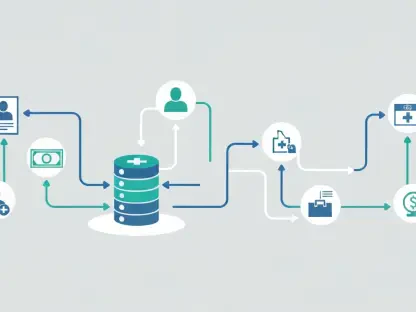International expansion is a major milestone for SaaS companies, presenting new opportunities and immense challenges. Expanding into the APAC and EMEA markets offers substantial potential, yet their diversity can lead to costly and complex market routes. An optimal initial focus would be on English-speaking markets within these regions. This strategic approach simplifies expansion, reduces localization costs, and provides a robust proof of concept, allowing for smoother scaling into more varied markets.
1) Benefits of Beginning with English-speaking Markets
One of the primary advantages of starting with English-speaking markets is the simplicity of communication. Markets such as Australia, New Zealand, Singapore, the UK, and Ireland remove language barriers, making onboarding and support processes seamless. This common language enables existing sales and marketing materials to be reused without substantial modifications, thereby reducing content production costs. Companies can repurpose their playbooks and product demos, avoiding the need for extensive localization initially.
Low content costs further accelerate time to market. By launching in English-speaking regions, SaaS companies can gain customers faster and effectively test their products to prove demand. Successful early deployments lead to valuable case studies that support further expansion. Focusing on these areas can give a SaaS company early wins, allowing them to refine their approach and adjust their playbook before addressing the more complex non-English-speaking markets that require tailored strategies.
2) Optimize for Scalability
Targeting English-fluent markets allows SaaS companies to establish scalable frameworks that can later be adapted to localized markets. Streamlining support and onboarding is crucial, as leveraging the current customer success teams without requiring additional language skills ensures a uniform customer journey across different geographies. This approach maximizes efficiency and maintains consistency in customer experience, fostering trust and reducing onboarding time.
Refining sales playbooks for these initial markets provides a stable foundation for scaling. By using data analysis tools like Gong or Chorus, companies can monitor regional trends and implement small enhancements to improve sales performance. Successful sales strategies can be reused, leaving minimal adjustments needed. This method optimizes resources while ensuring that the methods are effective, allowing for scalability as the company grows and enters new regions.
3) Identify High-Growth Companies
Even within English-speaking markets, identifying the right prospects is crucial. Targeting industries and organizations with a high propensity to need your solution is essential for successful market entry. High growth velocity typically indicates a greater need for scalable solutions, providing a strong business case for your product. Companies experiencing rapid growth often face significant costs of inaction, which can create compelling events for new business opportunities.
To identify high-growth companies, SaaS firms can use resources such as LinkedIn Sales Navigator and regional startup rankings. These lists provide valuable insights into companies poised for expansion and investment. Additionally, platforms like Crunchbase help identify recently funded companies. Aligning your pitch with their growth goals and referencing your own funding milestones can personalize outreach, making it more relevant and appealing to these potential customers.
4) Utilize VC Connections
Venture capital firms play a pivotal role in the growth trajectory of companies, and establishing connections with key VCs can provide SaaS firms with valuable access to their portfolio companies. These relationships not only enhance a SaaS firm’s reputation but also open doors to high-growth enterprises that are often on the lookout for innovative solutions to scale their operations.
Reaching out strategically to VCs is essential. Leveraging LinkedIn and common connections to secure warm introductions can facilitate the initial engagement. Once connected, providing value is vital. Offering information or tools that address some of the challenges faced by the portfolio companies showcases your expertise and usefulness. This approach builds trust and goodwill, increasing the likelihood of fostering partnerships that can accelerate market entry and growth.
5) Personalize at Scale
Adapting your strategy to personalize outreach at scale is crucial for effective engagement. Leveraging tools like Apollo.io and Salesloft allows for hyper-targeted campaigns that speak directly to the specific needs and pain points of potential customers. By understanding the unique challenges each market faces, SaaS companies can position their solutions as strategic allies, addressing these issues in a way that resonates with the audience.
What works in one region, like AMER, might not hit the mark in APAC or EMEA, and vice versa. Therefore, identifying the specific pain points of each market and tailoring your messaging accordingly is vital. This approach ensures that your campaigns are relevant and engaging, ultimately driving higher conversion rates and fostering stronger relationships with potential customers.
6) Adapt to Regional Norms
Navigating regional norms requires a keen understanding of local market behaviors and cultural nuances. In APAC and EMEA, approaches that work in AMER might not yield the same results. For instance, cold calls may be less common and not well-received in APAC and EMEA compared to AMER. In some regions, like France, email response rates might be lower compared to global benchmarks, requiring alternate strategies such as tradeshows and channel introductions, which are more effective starting points.
Being aware of these regional differences and adapting your strategies accordingly will help in building rapport and gaining traction within new markets. Balancing persistence with cultural awareness ensures that your efforts are well-received and effective, paving the way for successful market entry and growth.
7) Localize in Phases
Focusing on English-speaking markets first allows SaaS companies to gather valuable insights and refine their strategies before addressing non-English-speaking regions. This phased approach to localization helps in applying lessons learned and reducing risks associated with initial market entry. By gradually expanding into more complex markets, companies can build on their initial successes and ensure a smoother transition.
Localization should be seen as an ongoing process rather than a one-time effort. Continuously adapting your product, marketing, and support strategies to meet the evolving needs of each market will ensure sustained growth and customer satisfaction. This iterative approach allows for scalability and long-term success.
Final Thoughts
International expansion is a significant milestone for SaaS companies, offering both exciting opportunities and substantial challenges. When branching out into the APAC and EMEA regions, the potential for growth is considerable. However, the diverse nature of these markets can make the process complex and expensive. A strategic approach to ease this transition would involve initially targeting English-speaking markets within these regions. Focusing on such markets streamlines the expansion process and minimizes localization costs. By reducing the need for extensive language services and cultural adaptations early on, companies can develop a strong proof of concept. This method allows them to establish a solid presence and gather valuable insights, making future expansion into more diverse and non-English-speaking markets smoother and more efficient. Successfully navigating these initial markets can provide the stability needed to venture further, ultimately reducing risks and setting the foundation for long-term success in an international landscape.









